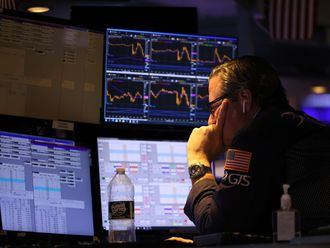Financial crises always seem to appear out of nowhere. Economists and financial experts alike have spent decades trying to predict the unpredictable. However, there are warnings ... and warnings can be studied, analysed and perhaps avoided.
Economists and experts build the most sophisticated model that incorporates all kinds of factors, from a change in gold’s price to unrest in countries, to the discovery of a new planet. Yet, that would still not necessarily yield the results you may be seeking in predicting the exact timing of the next crisis, its severity, and what is going to kick-start it. There are, however, signs.
The first sign that you should keep an eye for is an increase in gold’s price. The normal level, in my point of view, is between $1,200 and $1300 per ounce. Two years ago, the price of gold was below $1,200 and it exceeds $1,300 today. This doesn’t mean that a financial crisis is imminent, but that there is a general concern among investors on where markets are heading.
This is especially important given the tapering of US Fed’s quantitative easing. QE is bond purchasing by printing currency, with QE being more fancy and technical and hence used more frequently in describing what central banks have been up to.
The Fed raised interest rates last year and the intention is to increase it three times in 2018. The European Central Bank (ECB) has taken a similar stance in tapering its QE programme, except later towards 2017. The other central bank that has also been aggressive in purchasing not only bonds but also stocks, which no other central bank has done, is the Bank of Japan (BoJ).
Japan, as a result, has realised economic growth each quarter for almost two years now. This brings me to the second sign.
The second sign that needs to be observed closely is the consistent increase in the valuation of reserve currencies, including the Japanese yen, the euro, the Australian dollar and the Swiss franc. Those were identified through multiple economic models, and so I will spare you the technicality here.
What you need to know here though is that the euro generally moves positively with gold, while the others move negatively. So, you shouldn’t be just looking at patterns in gold’s price, but also at how those currencies move with/against gold.
The directions identified above would not always hold given the unconventional actions being taken by central banks to stimulate economic growth. In all cases, pay attention to general trends rather than daily, weekly, or monthly volatility.
The reason I did not discuss the dollar here is because of its direct, though complex, relationship with gold. With the expected Fed hikes, gold’s and any other commodity’s price quoted in dollars should move in the opposite direction of the dollar. Has this been the case?
What triggered the last financial crisis was failure in the US banking sector to cope with the increasing defaults in mortgage payments. That, in turn, negatively affected banks that have created investment products based on those mortgages, which consequently negatively affected all international investors in the US economy, or in those products specifically.
Though there have been speculations on the same to be repeated in other debt markets in the US, it is unlikely to be of the same global ramifications given the size of the mortgage debt market back then.
What would trigger the next financial crisis is one of two: one, an economic collapse in major economies or in countries with big populations, which could trigger a chain reaction in other emerging and developing markets, especially in light of the dollar’s appreciation.
Two, not resolving China’s corporate and regional debt issues. The final thought that I want to leave you with: can China balance its domestic debt issues against its international investments?
— The writer is a UAE based economist.












